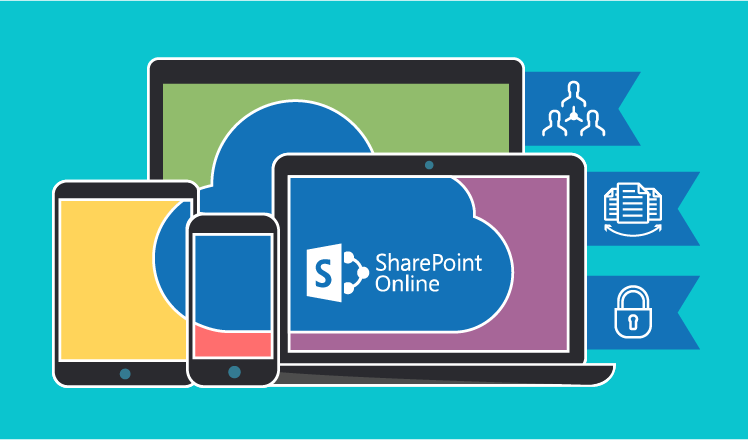SharePoint Online: Takeaways from Microsoft Ignite 2016

At the annual Microsoft Ignite conference in Atlanta, GA on September 26-30, the SharePoint team headed by Jeff Teper, Corporate Vice President for OneDrive and SharePoint, shared their latest results on improving SharePoint Online (part of Office 365). Our SharePoint consultants sum up the new features that the platform is ready to offer.
Without doubts, Microsoft makes great strides towards cloud solutions. SharePoint keeps in step as well: the platform's collaboration capabilities are prominently featured into the recently announced Microsoft Dynamics 365, a new cloud solution that brings together Microsoft's CRM and ERP offering. Moreover, SharePoint Server 2016 can be considered as the SharePoint Online's younger brother: the platform's on-premises version inherits interface and new features from its cloud relative.
During the summer, SharePoint's team worked hard to enhance both users' and developers' experience, which allowed to introduce a bunch of updates this autumn. Now let's take a look at the most vivid improvements.
Towards more dynamic and barrier-free collaboration
?Great things in business are never done by one person. They're done by a team of people', said Steve Jobs. Indeed, unified efforts of team members usually bring quicker results and a better quality of the work done. Such collaboration-focused solutions as SharePoint don't stay aside, constantly extending their collaboration capabilities.
Better visibility of team activities
In the recent article on employees' personal pages, I highlighted how important it is to extend the personal page's functionality from mere business cards to powerful connectors between employees. As for SharePoint Online, it comes with improved people cards containing not only contact information, but also organizational relationships and documents that employees work on.
Actually, this update has a great importance for teamwork and facilitates knowledge sharing substantially. By clicking on the team member's name, employees see the recent files created by this person, can read and share them. What's more important, files are available for team members only: no user outside the team can access documents, which ensures the needed level of privacy and security.
SharePoint Online also offers a separate team news page. The page contains all the team activities, supports multimedia files and opens up Yammer for teams. Team pages can be customized with additional web parts and are responsive by default. Additionally, team news are displayed at the top of team site home pages.
Easier file sharing
Though a simplified files sharing is the essence of SharePoint since its very first release, Microsoft keeps making small compliments to SharePoint Online users by adding OneDrive capabilities. Today users can share their files via OneDrive for Business or save them on SharePoint team sites (now a part of all Office 365 groups), they can also continue working on any documents regardless of their initial location (e.g. a SharePoint document library, Outlook, Yammer, etc.). Furthermore, OneDrive brings together all Office 365 files and displays them in a unified view throughout all SharePoint team sites. A 25 TB storage per site or group is the icing on the cake that makes the enhanced file storing and management capabilities even more impressive.
Accessibility via major mobile platforms
SharePoint is getting closer to make its adopters' wishes come true and becomes more mobile-friendly. Though currently in preview, SharePoint mobile apps are now officially available for both Windows 10 and Android platforms. Mobile apps provide quick access to team sites and organizational portals along with enabling users to search for content and people across their organizations.
Improved data protection
Security is another aspect that SharePoint's team put into the focus in 2016. Though invisible to end users, new security features are of a great importance for system administrators who can ensure a better protection of their SharePoint environments and corporate data they keep.
Controlled access to sensitive data
To ensure a better control over users and organizational data they access, SharePoint's team introduced conditional access policies. The policies allow to flexibly manage employees' activities within SharePoint Online taking into consideration such important factors as the network that users are connected to, the device / the application they use, the type of data they want to access. Currently, only location-based conditional access policies are enabled. This allows SharePoint administrators to restrict the access to organizational data when users are outside the office.
By the end of the year, Microsoft will issue conditional access policies regulating the access to corporate information from different devices (corporate and personal). This way, users can be prohibited from opening a sensitive document on their personal smartphones.
Conditional access policies are of a great value for those companies that process and store sensitive information, for example, healthcare organizations dealing with personally identifiable information (PII) and protected health information (PHI). The policy-based approach can help healthcare providers that use SharePoint Online solutions stay HIPAA-compliant and minimize the risk of data leaks caused by negligent or malicious employees.
Integrated analysis of user activities
To get a deeper visibility of users' activities within SharePoint Online and on-premises solutions, Office 365 admins are provided with a set of auditing and reporting tools that gather and analyze data from all SharePoint environments in the unified Office 365 Security and Compliance Center. With this new feature system administrators can easily detect illegitimate sharing, editing or deleting of sensitive data. At present, two types of SharePoint-related reports are available. SharePoint activity report reveals all the files a user viewed or edited, synced, shared internally or externally. At the same time, SharePoint site usage allows to analyze users' activities throughout all the active sites, control the storage available and follow files that were viewed, modified, uploaded, downloaded, shared or synced on a particular site.
What about SharePoint On-Premises?
Our short overview proves that SharePoint Online evolves quickly and becomes not only more user- and team-centric, but also more secure. New features may be especially attractive for companies that prioritize team collaboration, high staff mobility and focus on sensitive data protection. The advance of SharePoint Online can also urge companies to deploy hybrid SharePoint environments quicker or to plan a complete transition to the cloud version, which requires certain investments and infrastructure changes. If you already plan to move your SharePoint-based on-premises solutions to the cloud or think about implementing a hybrid environment, never hesitate to address your needs to our SharePoint consultants that are always ready to provide a free consultation, assess your current solution and draw up an optimal plan of moving to the cloud.

